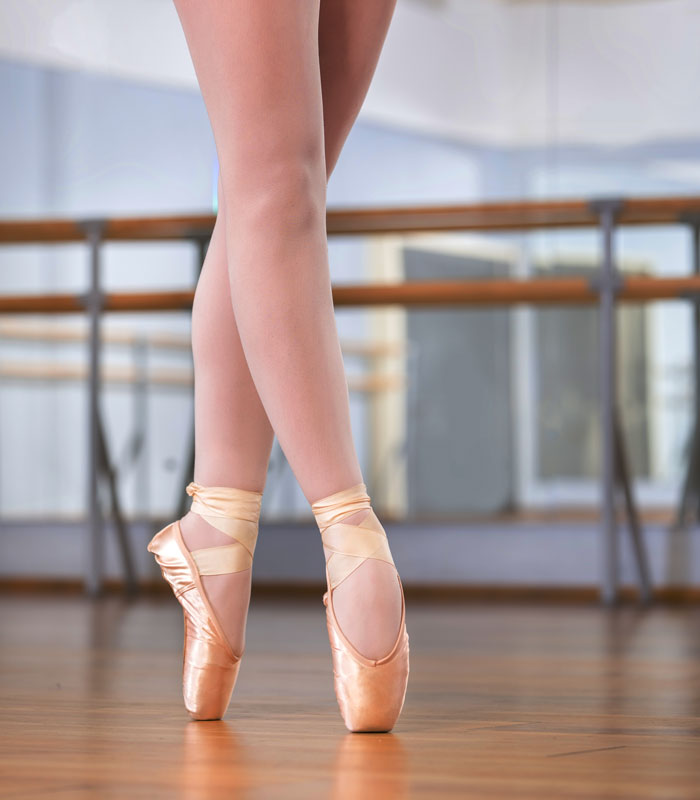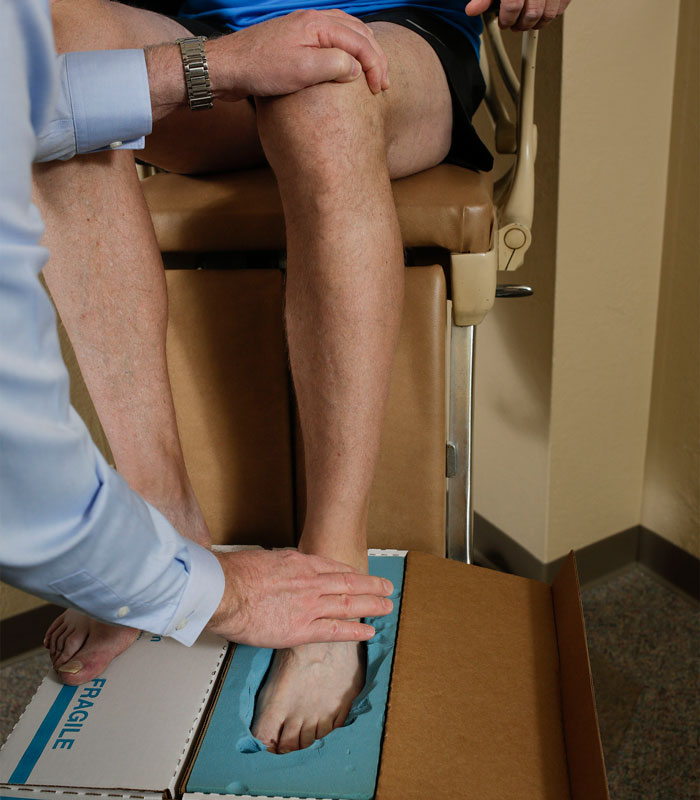Role of Orthotics
Physical therapists and/or doctors determine that PRI Orthotics may be helpful in a patient’s course of treatment to help them attain their postural restoration/ physical therapy goals and ensure its lasting success.
PRI Orthotics are shoe inserts that change the mechanics of the feet and lower extremity to correct foot function. Dr. Coffin’s philosophy is to make them highly conformed to the shape of the foot, non-compressible to provide support and flexible to allow a normal gait cycle. They are designed to be highly controlling and matched closely to the foot and shoe to achieve this goal.
To obtain these custom orthotics for their patients, therapists use a foam impression system. Using their thorough knowledge of anatomy, they align the foot, knee and leg in optimum position. The therapist will obtain relevant information such as your shoe size, type of shoes worn, diagnosis, activity level and type of sports participation, if any.
These impressions will be mailed to the PRI Orthotics Laboratory in Sioux City, IA, where Dr. Coffin and his staff will build your custom foot supports from high quality materials. They utilize measurements, photographs and further information provided by the health care provider to create a truly custom orthotic designed only for the anatomy and symptoms of that patient The lab mails them back to the therapist or doctor, usually within one week of their receipt. The therapist or doctor dispenses them to the patient and follows their progress, consulting with Dr. Coffin when necessary.
How Is Motor Learning Involved?
Motor learning is a basic principle of Postural Restoration Physical Therapy. It involves the brain storing the patterns in which we recruit muscles for various activities.
For example, when writing, you don’t think about forming each letter, the brain has learned and is already telling the fingers how to shape the letters.
When you’re walking, you don’t have to think about how to recruit muscles to place one foot in front of the other and move forward.
However, learning to dance is difficult at first because we’re teaching the brain the sequences needed to perform new steps. It becomes easier and more intuitive as our brains learn the proper sequences for the dance steps.
These examples help explain how we recruit muscles for walking and learn the patterns that can last a lifetime. If our feet and pelvis are correctly aligned, the brain learns how to move the feet, knees and hips for efficient, pain-free forward movement. If our feet aren’t working correctly, the brain learns a different pattern, one that is probably not most efficient ; but at the time, less painful, given the abnormalities present in the bones and ligaments. Operating with these altered directions , the feet may be allowed to over-pronate, allowing the knee to be constantly internally rotated which will eventually cause soreness.
The motor learning process tells the muscles to line the knee back up, perpendicular to where you’re going. This leaves the foot pointed out, but the motion is actually forced to take place at the hip joint now. With your hip externally rotated, the pelvis wants to tip forward at the ball and socket joint, increasing the lordosis in your lower back. According to postural restoration, there is a tendency for the left hip to be tilted forward further than the right, causing a twist in the lower back .


How Are PRI Orthotics Different?
As a podiatrist specializing in biomechanics of the foot, Dr. Coffin is especially qualified to design and fabricate orthotics. He has extensive knowledge of foot anatomy and foot function and has spent many years researching and treating the biomechanics of the foot. He works to ensure that the orthotics will line up the muscles, joints and ligaments so they function optimally and pain-free.
Many orthotics available from other manufacturers decrease pain but do nothing to maintain the correct balance and alignment of the bones and joints of the feet. It is common to see a hard plastic orthotic with a wedge of material under half of the heel, designed to transfer weight to another part of the foot. When using this type of hard plastic orthotic, the person’s malfunction is not corrected on a long term basis.
Creating biomechanically correct orthotics which line up the foot has been the passion of Dr. Coffin throughout his years of practice. He experiments with many different materials. He feels that flexible, non-compressible materials are necessary maintain control while allowing the foot to function through its gait cycle. The orthotics need to be highly conformed to the foot in a “neutral position.”
All orthotics are made in Dr. Coffin’s own laboratory and he personally completes several steps, including production of an accurate cast and positive replica of the foot in the correct neutral position; as well as finishing the process to create a device which will function well for each patient and their particular needs.
Dr. Coffin dedicates many hours to making PRI Orthotics and communicates frequently with the therapists and doctors involved. He values his relationship with each of the practitioners at the various medical clinics. His passion is to work with each therapist to create effective orthotics that will improve people’s function and enhance their lifestyles.
